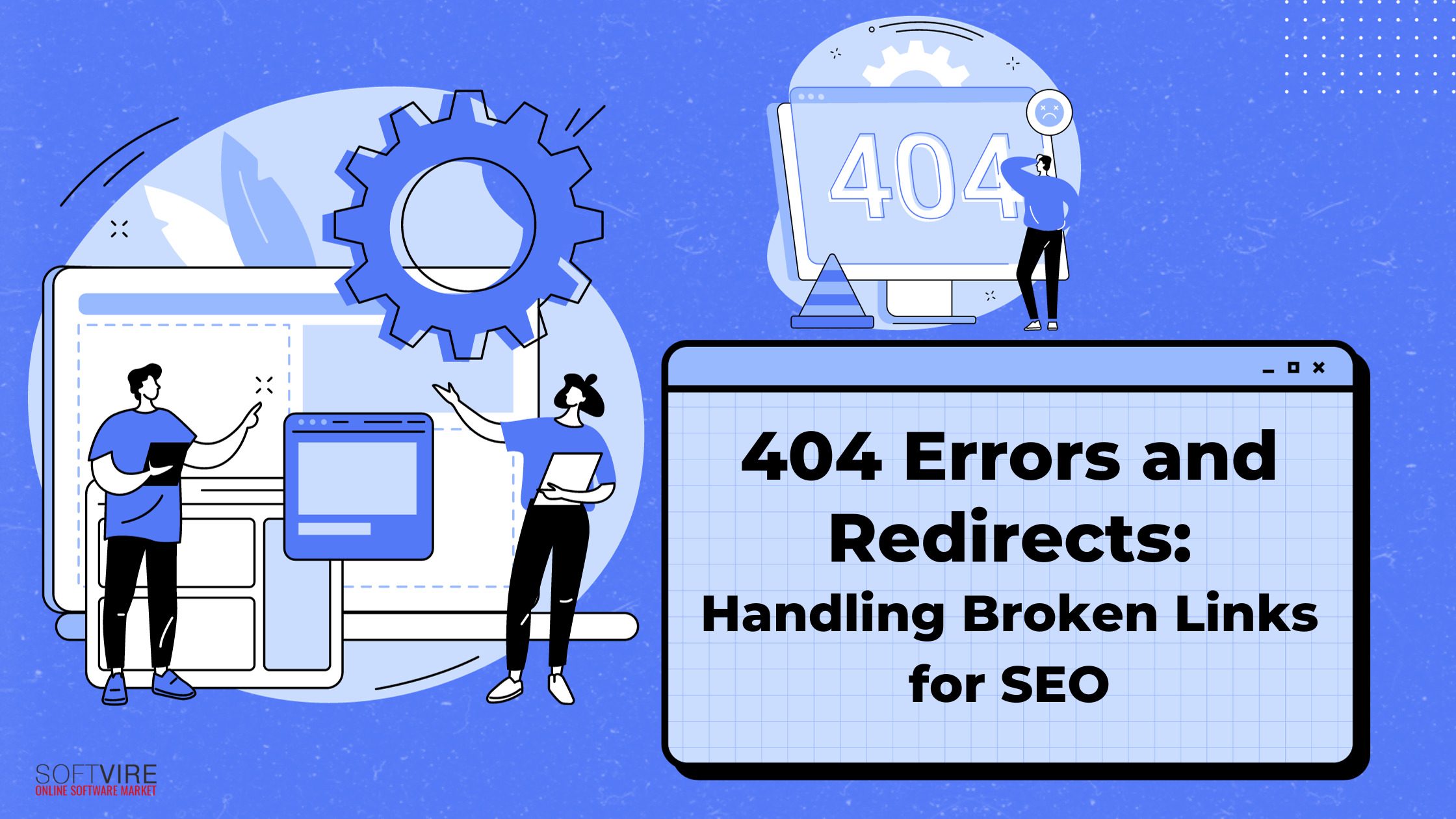The success of a website in the highly competitive digital landscape is contingent upon several aspects, one of them being the efficacy of its connections.
The presence of broken links is a prevalent technical SEO concern that needs to be addressed despite its potential to have a substantial influence on the quality of your website, its ranks, and the overall experience of its users.
In this blog, let us understand broken links and the recommended tips for identifying and dealing with those links.
What Are Broken Links?
When someone tries to reach the page that doesn’t work or exists, it will be directed to a 404-page due to broken links.
There are a few HTTPS status codes in the 400 range that signify missing or flawed content, but this is by far the most common.
There are more reasons behind connection failures. It is known as link rot, occurring when previously linked data is removed or changed.
Broken links may occur due to several factors, such as changes to the website’s URL format during the site’s migration, misspelled URLs, or the removal of pages and content.
Types of Broken Links
Different broken links can be represented on your website and its pages.
– Internal Links
Broken internal links may occur if the page’s URL has changed, the page has been deleted, or the page was lost during migration. When links on your site become broken, it prevents search engines like Google from continuing their scan of your site.
– External Links
An external link connects a reader to a website that’s outside of your control, generally another site that promotes the content you have on your site.
Links that no longer work might be due to the destination website being temporarily down for maintenance, permanently closed, or needing proper redirects.
External links disrupt the user experience and can affect the credibility of search engines such as Google since links to inactive sites make your site less authoritative and trustworthy.
– Backlinks
Backlinks are hyperlinks that point to your content from other websites. They are external referrals from other organizations to your content.
Changes to your website’s content, URLs, or deleted pages, among others, will prevent backlinks from supporting and constructing authority for it. It can potentially result in further harm to your reputation with Google and other search engines.
Why do broken links need to be fixed?
Broken links can negatively impact you, including internal links that direct to different pages within your site and external links that point to other websites.
First, they block the flow of the software. If users keep clicking on links and encounter the same error page, they might be frustrated. There’s nothing more frustrating for site visitors than clicking on a link only to be met with an unexpected page.
Search engines such as Google use broken links as a ranking factor. Therefore, fixing them is crucial for SEO. A significant number of broken links indicates neglect by a search engine’s crawler. If there are too many of them, crawl rates may drop, and Google may label your site “low-quality.”
The trust in online advertising cannot be overstated. Fixing broken links is one of the simplest maintenance tasks for any website. Maintaining your brand and consumer experience requires a well-designed website with a 404 page.
How to Check Broken Links?
One of the most important things you can do to start fixing your website is to learn how to spot broken pages and links.
1. Use web crawler
A web crawler is a search engine optimization strategy crucial for online advertising. Search engine optimization (SEO) spiders are software that, by scanning the web like search engines, may assist in identifying problems with a website’s optimization, such as broken links. To do this, use a web crawling tool to determine which website has broken links.
A web crawler plays a significant part in search engine optimization strategy. Search engine optimization (SEO) spiders are software programs that, by scanning the web like that of search engines, may assist in identifying problems with a website’s optimization, such as broken links.
The first thing we do is use a web crawling tool to find out which sites have broken pages and which pages those broken pages connect to.
2. Using Google Search Console
Google Search Console is a free SEO tool that should be used early and often. When understanding how Google perceives and crawls a website, Google Search Console is the best look for site owners and SEOs. It helps keep an eye on fixing and enhancing your site’s visibility on Google search results broken links.
To start with Google Search Console, you must first add and validate your ownership. After your site has been confirmed, go to the “Pages” report under the “Indexing” area. This report displays any faults Google crawlers discovered when indexing your website, including broken pages.
3. Manual Checks
The procedure isn’t practical for sites with more than a few pages. Still, it’s a good idea to personally verify the status and links on a sample or important pages nevertheless. The homepage, social networking links, and featured blog entries should be given top billing. To test whether a link is broken, visit the page in question.
By using the data obtained from the crawling tool, it is possible to refine the analysis by focusing on the anchor text and the surrounding material. This approach ensures that the investigation is explicitly targeting the problematic connections.
If you come across a link that claims it’s broken but works, it’s OK to continue and bypass it. The primary purpose for restoring broken links is to improve the user experience, so if that is sufficient, you’re in a good position.
The manual procedure might be arduous and time-intensive, mainly when dealing with websites of substantial size. Start the process using tools such as website crawlers, for instance, Screaming Frog, SEO browser extensions, and Google Search Console, as these may be beneficial.
What Are Some Best Practices for Preventing Broken Links?
Monitoring and resolving broken connections are crucial tasks; nevertheless, an equally advantageous approach lies in their prevention.
By adhering to these guidelines, you can drastically cut down on the number of broken links:
- Check the URL Structure: Keep your website’s URLs in the same format. As a result, fewer broken internal linkages will be made.
- Always Check Before Publishing: Double-check all inbound and outbound connections before releasing new material. A broken link may be caused by the slightest typo in a URL.
- Check Before You Change: Always double-check for broken links after making changes to web pages, whether for redesign, content update, or site relocation.
- Use Trusted External Links: When you connect to reputable outside resources, you lessen the likelihood that the link will fail. Websites with a good reputation are more likely to keep duplicate URLs or use redirects when necessary.
- Always Educate Your Team: Ensure that any members of your website management team are aware of the consequences of malfunctioning links or pages, as well as the critical nature of locating and rectifying them.
By taking these precautions and regularly checking your site, you can effectively handle and lessen the effects of broken links on your SEO and user experience.
Final Thoughts
To keep your website functional and user-friendly, you must regularly check for and repair broken links. With consistent maintenance and prompt updates, you can keep users happy and increase your site’s search engine results.
Website management takes time. You should check your website’s broken links everywhere. Following these tips above may help you to resolve broken links and speed up your website.






Wow!!! you are great! thanks!!!!
Thank you for the article.
I am a new blogger and I have been using your website since the beginning.
I have to admit, if there’s any problem I come across or I need some help, I could find the answer here.
Good job!
I just came across your blog post and must say that it’s a great piece of information that you have shared.
This is really helpful content and must be shared across.
Great blog post!